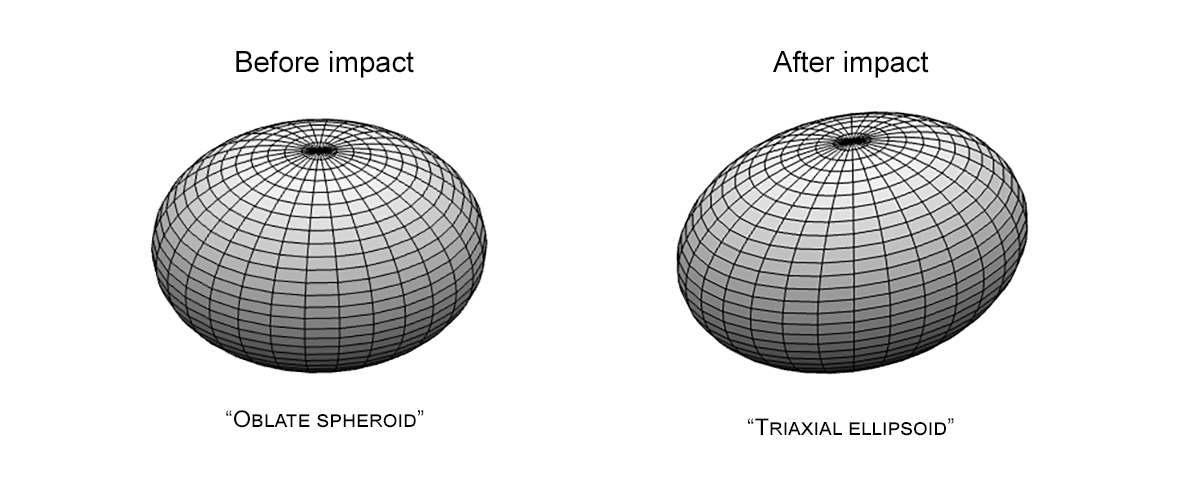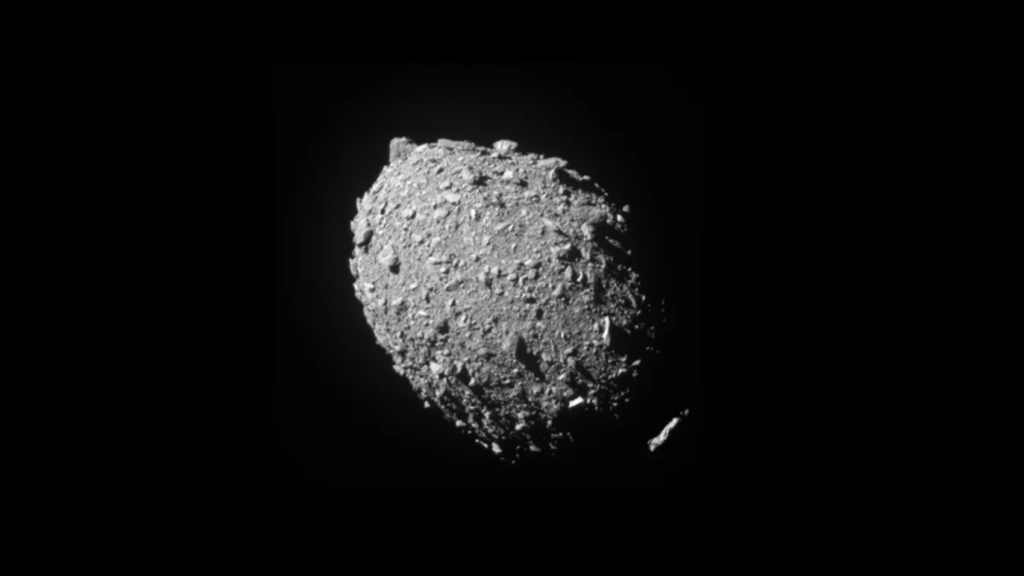A team of scientists from NASA’s Jet Propulsion Laboratory (JPL) has published the results of a study evaluating the effects of the bombardment of the asteroid Dimorphos, which is a moon of the larger asteroid Didymos. It showed that the small body had changed its shape and orbit.
Changing the shape of the asteroid
The bombardment of Dimorphos occurred in September 2022, when the DART probe crashed into it. Ground-based telescopes observing the event managed to record the formation of an extended dust tail consisting of thousands of tons of ejected material. The impact also led to a shortening of the Dimorphos’s orbital period around Didymos.

Since then, astronomers have been trying to understand more precisely how the impact changed Dimorphos. The results of one of the recent studies suggest that there is most likely no crater left on the asteroid, but it has changed its shape.
Now their findings have been confirmed by colleagues from JPL. Previously, Dimorphos was a relatively symmetrical object and looked like a flattened ball. After the bombardment, everything changed. The results of computer simulation suggest that it has turned from a relatively symmetrical “flattened spheroid” into a “triaxial ellipsoid” shaped like an oblong watermelon.
Evolution of the Dimorphos orbit
The impact not only changed the shape of the Dimorphos, but also its orbit. Previously, it passed at a distance of 1,189 meters from Didymos, and its orbital period was approximately 11 hours and 55 minutes. The impact itself reduced it to 11 hours, 22 minutes and 37 seconds.

In the following weeks, the Dimorphos orbital period continued to shorten as the asteroid continued to eject matter into space and eventually stopped at 11 hours, 22 minutes and 3 seconds. As for the distance between Didymos and Dimorphos, it has decreased by 37 meters and now stands at 1,152 meters.
According to the researchers, all this suggests that the idea of using a kinetic strike on Earth-threatening asteroids is quite viable. This technique can really change the orbit of a cosmic body. We will learn even more about how the DART impact affected the Dimorphos in 2026, when the European Hera spacecraft arrives. It will be launched in October this year.
According to https://www.nasa.gov
Follow us on Twitter to get the most interesting space news in time
https://twitter.comne/ust_magazine


